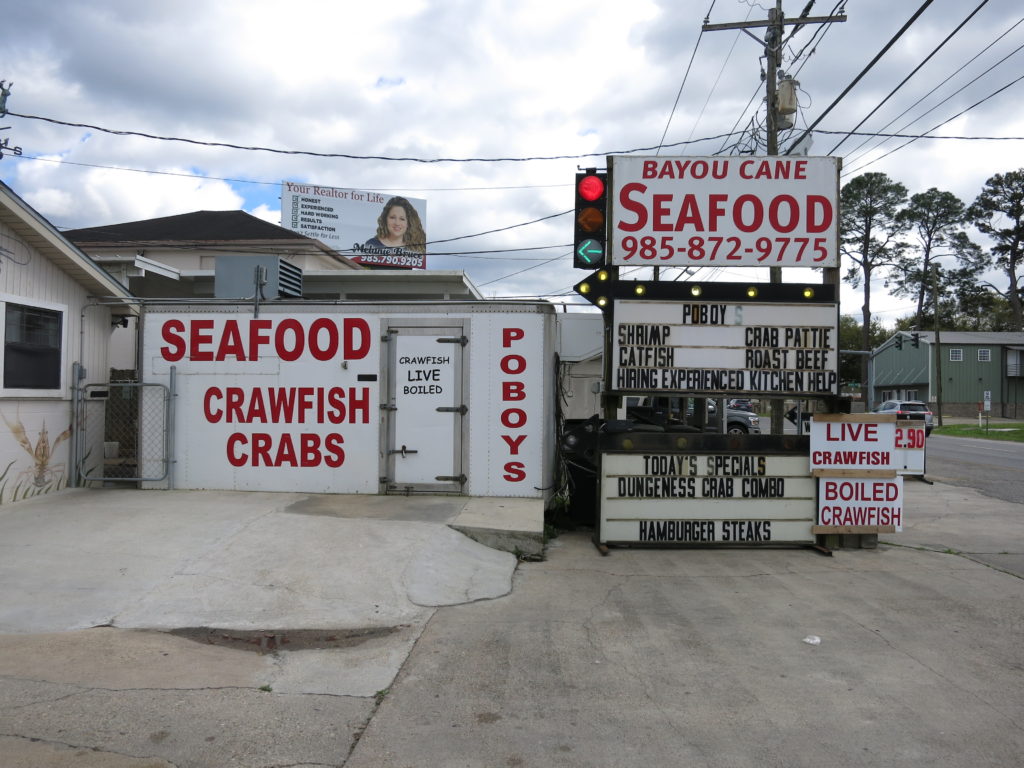Just off Main Street in Houma, Louisiana sits a small restaurant bordered up to the Terrebonne Bayou. There’re approximately 18 seats to dine at in the opened-space dining area. Homemade crunchy, sugar-like toffee sits for sale at the register along with freshly made shrimp dip.
Seafood is the name of the game at Bayou Cane Seafood. Crawfish, crab, shrimp… all the usual suspects are freshly prepared in-house and ready to be served with one of their many sides like red beans or gumbo.
But one southern staple is unavailable: oysters. Oyster fishing season in Louisiana came and went from winter to early spring. Early in the season, the Louisiana Department of Wildlife and Fisheries reported oyster mortality rates as high as 100% in some areas.
Conclusive end of season reports is yet to come out, but restaurant owners are enough proof of the situation.
“We got oysters in, but there just wasn’t enough. They sold out fast,” said Bayou Cane Seafood waitress Hannah Howard. “When they’re not good they just can’t sell them. Seafood poisoning is the worst food poisoning.”

Bayou Cane Seafood is just one of the various Louisiana seafood joints feeling the damaging effects on the oyster fishing season as a result of last year’s flooding Mississippi River. Too much freshwater intrusion and change in temperatures on the habitats led for an unfavorable oyster season.
The season and flooding were even so noticeably bad that the U.S. Department of Commerce declared a “catastrophic regional fishery disaster” for Louisiana, making them eligible for disaster assistance for the season.
The Bonnet Carré Spillway is believed to be a major played in the floods.
Due to the elevated water levels, the Bonnet Carré Spillway had to be opened by the U.S. Army Corps of Engineers. The spillway is a floodgate near New Orleans used to redirect the water from communities, according to the U.S. Army Corps of Engineers. The overflowing fresh water is deposited in Lake Pontchartrain and Lake Borgne, which connect to the Gulf of Mexico, both just two of the many homes for oysters.
The U.S. Army Corps of Engineers reported the usually unopened spillway was opened for a total of 123 days from late February to April and again from mid-May to late July, the longest period ever since its introduction in the 1930s, allowing fresh water to mix with saline waters.
In the long run, this mixture isn’t believed to be damaging to ecosystems in the water, according to the U.S. Army Corps of Engineering.
It can even provide real benefits to shellfish like oysters, according to Public Information Director of the Coastal Protection and Restoration Authority (CPRA) Chuck Perrodin.
If the oysters’ habitats are too salty, “oyster drill snails” can attack the regular oysters. These snails are even sometimes boiled and sautéed to create their own meal called “bigorneaux,” but, ultimately, they just prove to be a hassle for fishermen.
“The drill snail literally drills into the oysters,” said Perrodin. “And kill them.”
Drill snails naturally thrive in the saltier waters, so when fresh water comes in, it tends to ward them off.
“The river flooding saves the oysters,” said Perrodin.
But where the issues start to arise is when there is too much freshwater, like of that coming from the flooding Mississippi River. That can leave the oysters without enough salt, according to Perrodin.
The weather temperature is believed to also be a factor with the oyster seasons’ problems. When the weather isn’t cold enough, the salt levels in the water drop, according to Howard.
“They’re not good when they’re not salty,” said Howard.
These disappointing results are a rough time due to how much of a staple oyster are for Louisiana residents. Oyster dressing is a favorite at the Thanksgiving tables along with oysters being big business for restaurants across the state.
Not to mention it is a key income for many fishermen including catching shrimp and crawfish.
Oyster fishing is a national economic commodity in Louisiana. They supply around 30%-45% of America’s entire consumption of oysters, according to researchers with Barataria-Terrebone National Estuary Program, an organization dedicated to preserving coastal land and habitats.
New Orleans even hosts the annual Oyster Fest at the end of May. Contests held at the event include oyster shucking and the World Oyster Eating Championship. The record is held by
Michelle Lesco for eating 33 dozen oysters in eight minutes.
A task force has been set up through the Louisiana Department of Wildlife and Fisheries in order to track the oyster industry and regulate production. The Louisiana Oyster Task force also deals with legal and legislative issues regarding oysters. This includes monitoring illegal oyster harvesting or failure to report on commercial data.
But the future for this Louisiana delicacy may be uncertain as the Bonnet Carré Spillway continues to open and irregular weather patterns effect temperatures and salt levels. Sales and supply of these salty, shelled creatures remains on the rocks as prices rise and flooding persists.